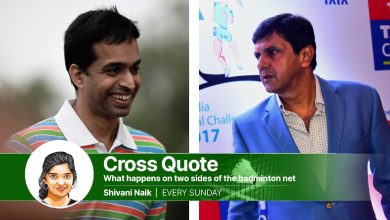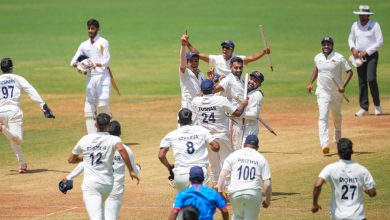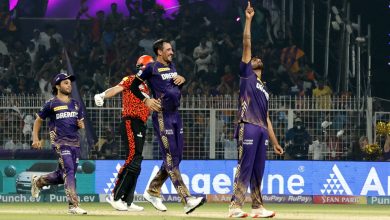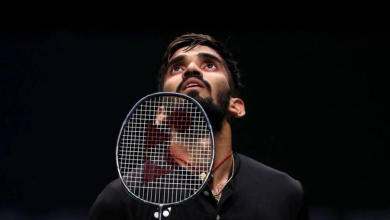Cricket World Cup: Sybrand Engelbrecht goes from plucking ‘best-ever catch’ to part-time Netherlands international | Cricket-world-cup News

From Ravindra Jadeja and Virat Kohli to Kane Williamson and Steve Smith, the 2008 Under-19 World Cup gave wings to several of modern cricket’s best players. But for Sybrand Engelbrecht, one of the players who provided the tournament with some of the memorable moments with his athletic fielding abilities, it did not provide the same kind of platform.A cursory YouTube search of Engelbrecht’s feats in 2008 labelled it as ‘the best ever catch in cricket hory’. Engelbrecht may be playing in the Dutch orange at the ongoing Cricket World Cup in India, but back then he was in the colours of South Africa.
Follow all the action from the Cricket World Cup 2023 on our special World Cup section. You can also find the latest stats, like the top scorer and the highest wicket-taker of the current edition, upcoming World Cup fixtures and the points table on the site.
In a group match against Papua New Guinea, Engelbrecht, fielding at gully, flew in the air with hang time reminiscent of a bird taking flight, and caught a thick outside edge off Alfred Amini with both hands at full stretch.
Later, as South Africa met India in the final, in another feat of fielding prowess, Engelbrecht plucked a Kohli drive from thin air at backward point, his feet high in the air as he got both hands on the ball. He took another crucial catch in the circle during the final, before running out India’s top scorer on the day, Tanmay Srivastava.
“I remember them (the catches) very well. It’s a long time ago, obviously, I look back on it fondly,” Engelbrecht, now 35, tells The Indian Express in New Delhi, where the Dutch contingent has arrived ahead of their match against Australia on Wednesday.
Engelbrecht asserts that those moments of fielding magic were no feats of chance, but a result of the kind of meticulous preparation of the junior side of a top-level cricketing nation, similarities of which he sees in his exing dressing room.
“I think sometimes you can look at something like that and think it’s a fluke or whatever. But during that time, the amount of effort that went into preparation, as a fielding team, is what enabled that. Very similar to way back then, I’m experiencing that now. The level of detail, preparation, focusing on small details, professionalism. I’m seeing all of that in the Dutch dressing room now. A lot of similarities between the two environments,” he says.
His reputation as a gun fielder has preceded him so far – Engelbrecht was, in fact, a fielding substitute the day he took that famous catch against Papua New Guinea. The idea that he was most useful in the field, rather than with the ball or the bat, was not always a positive. But he’s not keen to hide behind that fact as the reason for where his cricketing career has ended up in the 15 years since.
“I think when you’re young, sometimes you can get pigeonholed into a certain type of role, and because there’s a lot of energy around it, you try to live up to it,” Engelbrecht says. “I do think it (the perception that he was a fielder first) played a big part in my development as a player, but it’s no excuse, really.”
Like many cricketers representing associate nations, cricket, especially on the international stage, is only a part-time occupation for Engelbrecht.
He retired in 2016 having never represented South Africa internationally. He took a job at an investment firm after finishing his education concurrently with his cricket, and later went on to do his MBA.
When his job, which is still his primary occupation, took him to the Netherlands, he and his wife were working out ways in which they could assimilate into the country’s culture. That led Engelbrecht to club cricket – the platform many of the Dutch players used prior to turning into international cricketers.Most Read
1
‘SIM Swap fraud’: Delhi advocate receives 3 missed calls from unknown number, loses money from account
2
Centre approves voluntary retirement of powerful Odisha IAS officer V K Pandian
See More
“Once I picked up the bat again for the first time since I retired in 2016 and started playing more regularly, (I) realised how much I missed it. It formed such a big part of my life at one stage, so it became easy to get back into the groove and then one thing led to another,” he says.
Many of his Dutch teammates are not, or have not always been, full-time cricketers. And those that do, make their living abroad. Engelbrecht believes it is the responsibility of this generation of players to create interest back home to get the next generation full-time professional contracts.
“I also think there’s a common goal within this team’s environment to play a kind of brand of cricket and achieve success that generates positive momentum that leads to capital investment in Dutch cricket that enables up-and-coming players to play this sport professionally, full time and earn a proper living. The common driver is to professionalise the game even more in the Netherlands,” he says.







